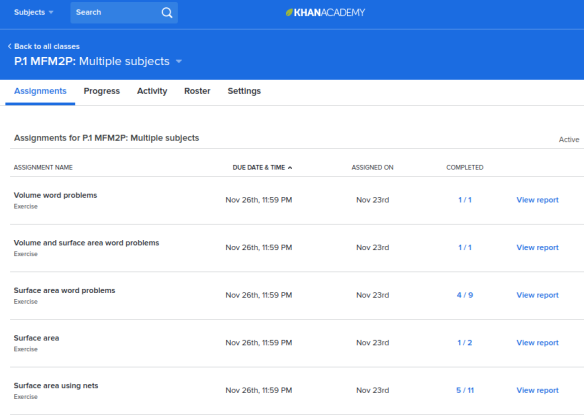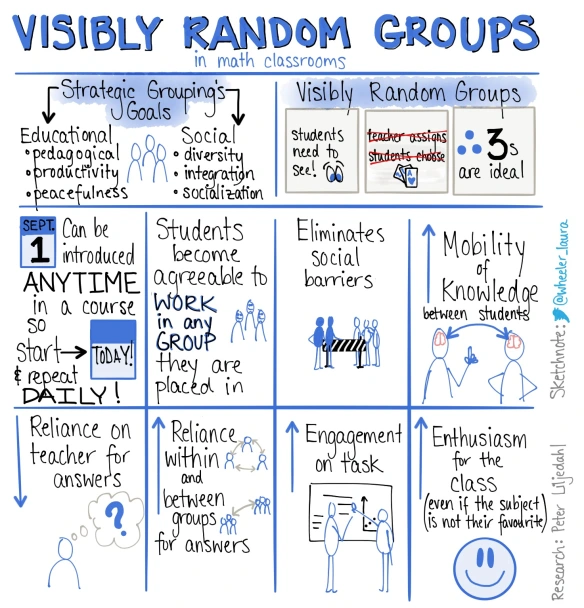I first wrote about how I was using Khan Academy with my students in late 2014 here. Then earlier this school year I wrote a response to another blogger’s post about why online Math practice tools aren’t good, here. Since that first 2014 post, Khan Academy has changed & improved quite a bit and so has how I use it with my students. So let me share a little of my Khan Academy pedagogy.
From here on out, KA = Khan Academy
Students and teachers can use KA anytime they like without having an account or without joining a teacher’s KA class. However, by making an account, the student’s progress gets tracked & saved in KA, allowing the site to better offer next steps of Math for them to work on. And by joining the teacher’s class, the teacher has the ability to assign practice problems & check student progress. I highly recommend using it as a class like this.
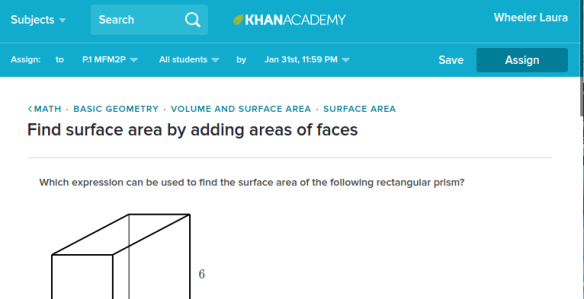
Step 1: Create a class
If you haven’t yet, make a KA account yourself. I often log in from my chromebook & so I love the simplicity of the red Google button that automatically logs me in using my school board Google account.
Then head to your “dashboard” https://www.khanacademy.org/coach/dashboard & click on “add new class” (on the right side). Enter information for your class – I like to name it by period & course code – or choose the “import from Google Classroom” option if you already have all your students connected to Google Classroom.

You will be prompted to tell KA what Math subjects your students are learning. I choose “World of Math”.
Step 2: Get students in your KA class
Two ways to do this:
- Invite students by email address (or by email but via Google Classroom). The advantage here is that you will see a list of invited students on your dashboard & KA tells you which students have not yet accepted the invitation; makes tracking the sign up process simple.
- Give students the Class Code. This can be found by starting from your dashboard choosing the class & then clicking on Roster. Top right you will see the Class Code. I used to write the code on the board in my classroom & students go to khanacademy.org/coaches to enter it & join the class.
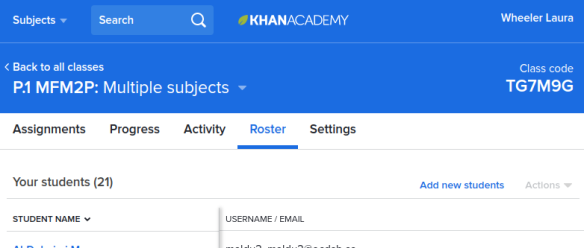
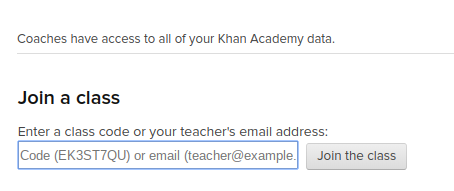
If at any time you’d like to change the name of your class or change which subjects you attributed to the class at the beginning, you can click on the class name in your dashboard & then choose Settings:
Step 3: Find content & Assign it
So let’s say that today we did a 3 act math task or problem-based learning activity involving surface area & tomorrow I want my students to do some individual practice on surface area. I use the search bar at the top of KA to search for that topic. I click on “Exercises” to filter it so that I only see the practice sets: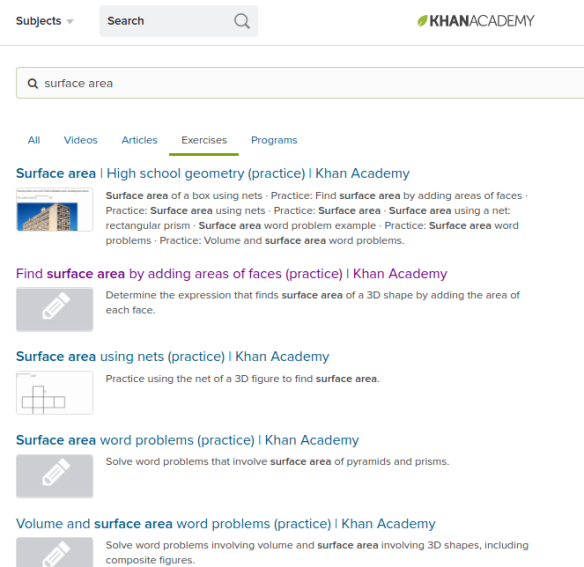
Once you click through to the exercise set, along the top you have the “assign” options. You can choose to assign the set to one or more of your classes. By default “All students” is chosen but you can click the drop down in order to assign to only some of your students if you like (useful for differentiation). Choose the due date & time (students can complete it after the due date still but it will notify them that it’s overdue. When ready, click Assign.
Step 4: Students do the practice set
I provide class time to practice independently on KA after each activity we do in groups. What they can’t get finished in the provided class time becomes homework to complete at home.
Students log in to the website (khanacademy.org/login) or download the app & sign in there. The assigned work will be on their dashboard in a list of assignments to do. They click “Start” next to the assignment title. I have my students work on paper so that if they get stuck they have a trace of their thinking so far for me to help them find their error or sticking point. Once they have an answer, they choose the answer (if it’s multiple choice) or type it in (paying attention to how KA wants it submitted; rounded to the hundredth or as a precise fraction instead of a rounded answer). They click “Check” and KA either tells them they are correct, or incorrect & try again.
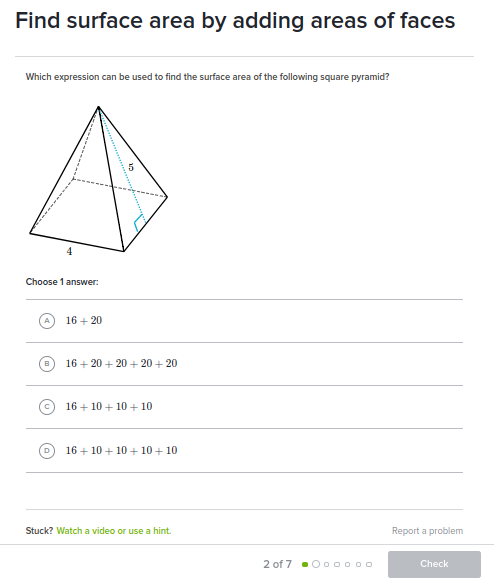
If students are stuck they have the option near the bottom of the screen to watch a video or use a hint. The KA videos are pretty traditional teaching and often involve tricks like FOIL. But they are better than no help at all when a kid is at home & stuck on a problem. Hints are literally the next step in the problem given to them. They can keep pressing hint until the whole solution is shown & explained. But using any hint results in the student being allowed to finish the question, but not have it count as successful. I believe KA’s recent changes mean students need to get 70% of the problem set correct to be considered “practiced” on that skill.
Step 4: Checking their work
KA tells students immediately if they get a question right or wrong. Students cannot move to the next problem until they’ve entered the correct answer for the current one. So students get immediate basic feedback about right or wrong.
From the dashboard for a given class you can see the current assignments as well as past ones (whose due date is past). If you click on the number of students that have completed an exercise next to its title (ex. 3/15), you can see a list of students and their scores. You can sort by date, number of attempts, score, etc. This can also be downloaded as a CSV file (which opens as a spreadsheet in Google Sheets or Excel or similar programs).
If you click on View Report next to the assignment title (not the one next to each student in the above image), you can see which questions the students had the most trouble with: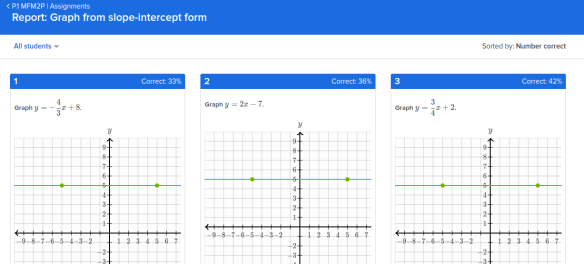
Step 5: Assigning further homework & Differentiating
I have created a list of all the KA exercises that meet the curriculum needs for each course I teach, divided by overall expectation. You can see an example here: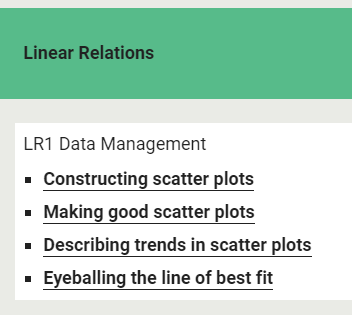
I list the practice from easiest to hardest (or in the order in which we will study it). When I am assigning the 2nd or 3rd practice set from that list to my students, I will use the “Progress” tab for each class & I will click on “Within mission” in the top gray bar & search for the list of practice sets for that expectation (you can see this screen below). Any student that is still in the “needs practice” or “struggling” column will be reassigned the first homework. Any student that is “practiced” or above on the first homework gets assigned the 2nd homework, and so on until each student has been assigned the next practice set for them to work on according to their completed work to that point. I find this helpful to not overwhelm students with a practice set they are not yet ready to tackle individually.

Step 6: Mastery
When students are done all of their assigned practice early, they have three options:
- They can redo old practice sets to increase their score on them if they weren’t happy with how they did. They can find these under their “completed assignments” list in their account or by searching the title of that practice set.
- They can do KA’s “mastery” quiz which gives them a mix of 5 or 6 problems from topics they’ve been practicing. The mastery serves to check if students retain their abilities over time; can they still find surface area 2 weeks later?
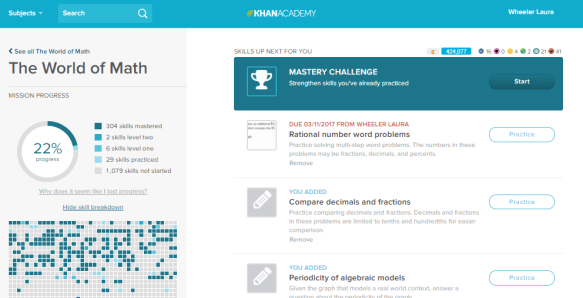
- They can work ahead on practice sets that we have not yet assigned by choosing from the list on our Google site.
Step 7: Using the spreadsheet of data
There are two main things I do with the data that KA provides for me; communicate with parents & guardians as to their child’s progress on KA skills and use it as backup evidence at the end of a semester when I am determining whether or not a student has shown sufficient achievement of an overall expectation for the course.
On the “settings” tab of each class, you can download the student data as a CSV file:
I save that CSV file to my Google Drive & open it in Google Sheets. I move & hide columns to meet my needs. I use the IFERROR formula to compute their best score yet (not the score at the due date) for each practice set & display “incomplete” if there’s no score. I sort by student and copy & paste their table of data into an email to them & their parents.

I try to do this every few weeks. I download a new .CSV file each time so I have their up to date best score to honour when they go back & try again or do mastery to level up. This is purely for feedback to them & their parents at this point.
At the end of the semester I do a final spreadsheet where I do one extra step: I sort the exercises by curricular expectation, for each student. When determining a final grade or whether or not to grant the credit, this can serve as backup evidence of their skills in the case where they have difficulty with the more complicated problem solving on our formal evaluations.
PHEW! I think that’s about it.
Have you used Khan Academy? How do you use it with your classes? Let us know in the comments below!
– Laura Wheeler (Teacher @ Ridgemont High School, OCDSB; Ottawa, ON)

